British Shorthair Cats are wrapped in history, admired for their teddy bear look, and praised for their calm nature. But how did this cat make its way from ancient Rome to modern living rooms? What makes it so unique? And what does it take to care for such a distinguished breed?
In this article, we'll trace the journey of the British Shorthair, explore its physical features, and uncover some fascinating facts. We'll guide you through its history and how it became a show cat sensation.
But the real charm of the British Shorthair? Well, that's something you'll have to discover as you read on.
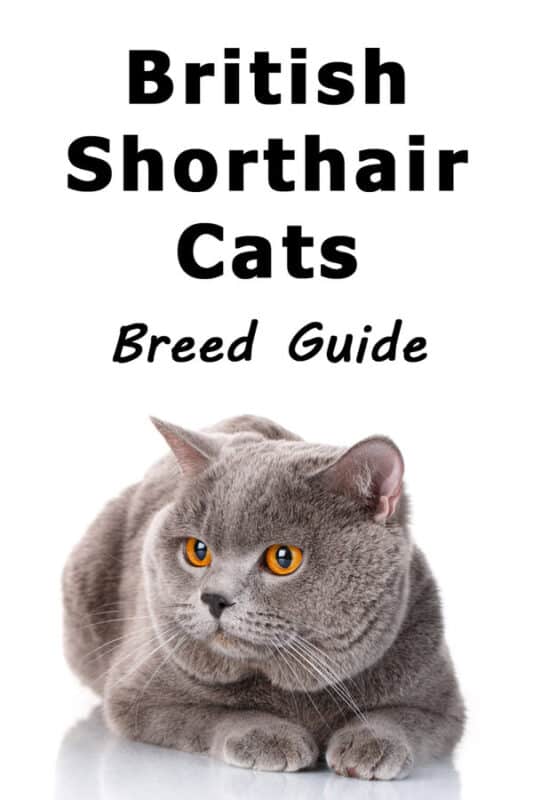
British Shorthair Cats: A Comprehensive Overview
A Unique British Heritage
The British Shorthair isn't just another cat breed; it's the oldest one in Britain. But despite its deep-rooted history, the US recognized this breed only in the late twentieth century. Why did it take so long?
Teddy Bear Look: An Instant Attraction
What makes the British Shorthair stand out? It's the "teddy bear" look. This unique appearance, combined with a calm nature, has captured the hearts of many. It's not just a beloved pet; it's also a star in the show cat world.
Growing Popularity
From an obscure breed to a sought-after companion, the British Shorthair's journey is captivating. But the rise to fame isn't the only intriguing part of its story.
As we dive deeper into its background, characteristics, and care, you'll discover why the British Shorthair is more than just a pretty face. Its charm and personality might just win you over. Stay with us as we explore everything there is to know about this remarkable breed.
SIGN UP FOR THECATSITE'S EMAIL UPDATES >
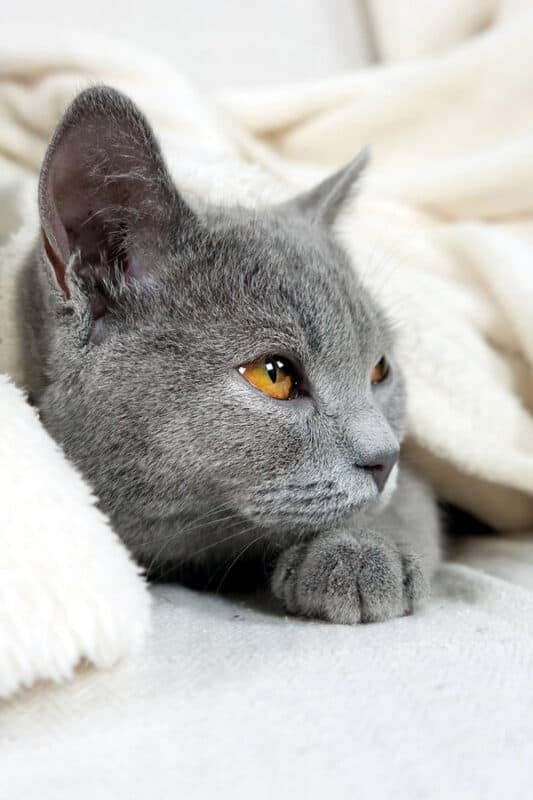
The British Shorthair: Breed History
Origins: From Rome to Britain
The British Shorthair is said to have originated from the common domestic cat of ancient Rome and is believed to have been brought with the Romans when they invaded and ruled England two thousand years ago. Throughout the years, these cats bred among themselves on the relatively secluded island - possibly cross-breeding with local wild cats.
Victorian Era: The Rise of Pedigreed Cats
During the nineteenth century, the interest in pedigreed cats flourished in Victorian Britain. As exotic cats from the far and near Orient arrived, some breeders decided to recreate the local British Shorthair as a pedigree in its own right. In 1871, British Shorthairs were shown as a breed in the Crystal Palace cat show.
Post-War Revival: A New Look
With the development of the new cat breeds, interest in the British Shorthair declined, but the breed's revival after the Second World War encouraged British breeders to make improvements by cross-breeding with Persian cats. This enhanced the round thickset look of the British Shorthair.
American Recognition: A Debate Settled
The year 1980 marked a significant milestone. Major American cat associations recognized the British Shorthair. But even today, differences exist between British and American definitions.
British Perspective
The British Association of the Cat Fancy sees variations of the British Shorthair as different breeds. This includes the Manx and each color group separately. They also recognize the British Colorpoint Shorthair as a distinct breed.
American Perspective
The major American associations view all colors of the British Shorthair as one breed, except for the color-pointed cats. They see the Manx as a different breed.
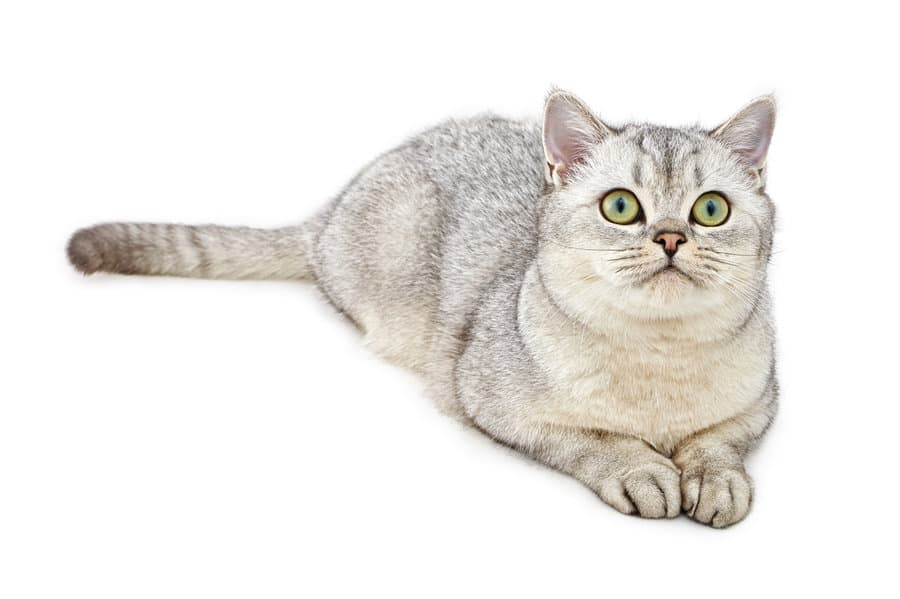
British Shorthair Cats: Breed Description
Physical Characteristics: A Teddy Bear Appearance
The British Shorthair cat boasts a broad, massive body. Strong legs support its frame, ending in round paws. The tail is thick, with a round tip. The head's roundness complements pronounced whisker pads.
Round, open eyes and well-set ears add to the overall round appearance. Many people see a smiling, "teddy bear" look in this breed.
Size and Sexual Dimorphism
This breed is powerful-looking and large. A broad chest, thick legs, and rounded paws define it. The head is large and rounded, and mature males often have broad cheeks.
Males weigh between 9–17 lb, while females typically weigh 7–12 lb. These cats mature slowly, reaching full development at around three years.
Identifying Features
The British Blue, a variant, can get confused with the grey Scottish Fold. But pointy triangular ears set the British Shorthair apart, unlike the Fold's softer ears.
Coat, Colour, and Patterns: A World of Variety
The British Shorthair's coat is dense, plush, and "crisp." It's one of the breed's defining features. British Blue is the most known variant, but many other colors and patterns exist.
These include black, blue, white, red, cream, silver, golden, cinnamon, and fawn. Various associations also recognize chocolate and lilac. Patterns range from Classic Tabby to Bi-Colour & White, Smoke, Tipped & Colourpointed.
Temperament: Easygoing and Dignified
British Shorthairs are known for their easygoing nature. They're dignified, not overly active, but devoted to their owners. This makes them a favorite among animal trainers. They're usually safe around other pets and children but prefer not to be picked up. Minimal grooming suits them, but care with diet is essential to avoid obesity.
A Quiet Companion
These cats are quiet and vigilant. If they trust their owners, they'll silently follow and stay with them. Unlike typical lap cats, British Shorthairs prefer to stay beside people rather than on laps. They enjoy having their feet on the ground and have a low voice. When left alone, they'll quietly wait for their owners to return.
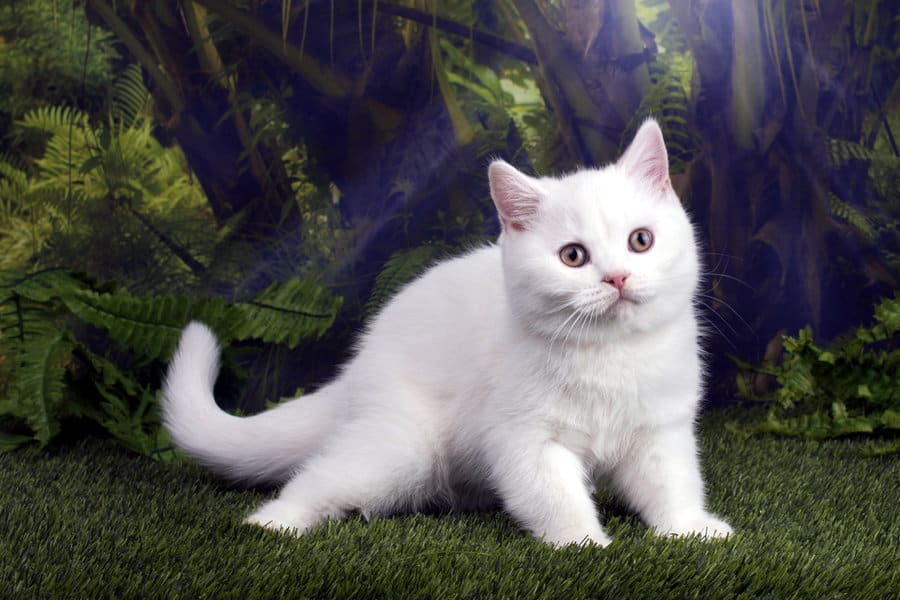
The British Shorthair: Special Needs & Care
Grooming and Maintenance: Simple and Minimal
The British Shorthair is an easy-to-maintain breed. The short coat needs only brushing once or twice a week to remove dead hair. Occasional bathing helps to remove excess oil from the coat.
Lifespan: A Generally Long-Lived Breed
People in the UK see the British Shorthair as a cat that lives long. Many live for 14–20 years. Some data show a median lifespan of 11.8 years. In Sweden, the median lifespan is more than 12.5 years. Most live to 10 years or older. Over half live for 12.5 years or more.
Health Considerations: Awareness and Prevention
Certain health issues may arise in this breed. It's crucial to recognize and manage them properly.
Hypertrophic Cardiomyopathy (HCM)
HCM is common among British Shorthairs. A study found that 20.4% of males and 2.1% of females had this heart problem. Now, HCM testing for breeding males is mandatory in Denmark.
Polycystic Kidney Disease (PKD)
PKD was once a high risk but has seen a decrease. A DNA test lab noted a significant drop, and the carrier frequency is now at 1%. Though incurable, drugs can ease its effects.
Embracing Care and Celebration
The British Shorthair cat offers much to its owners, from minimal grooming to a generally long life. While there are specific health considerations to be aware of, knowledge and vigilance can lead to early detection and management.
The recognition of this breed, even on something as special as postage stamps, underscores its unique place in our homes and hearts. Embracing both the care and celebration of the British Shorthair ensures a happy and fulfilling relationship with this remarkable breed.
SIGN UP FOR THECATSITE'S EMAIL UPDATES >
Comments? Leave them using the form below. Questions? Please use the cat forums for those!
Note: We may get commissions for purchases made through links on this page.


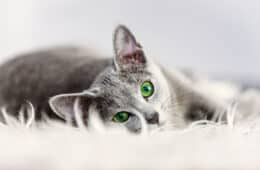

4 comments on “British Shorthair Cats [A Breed Overview]”